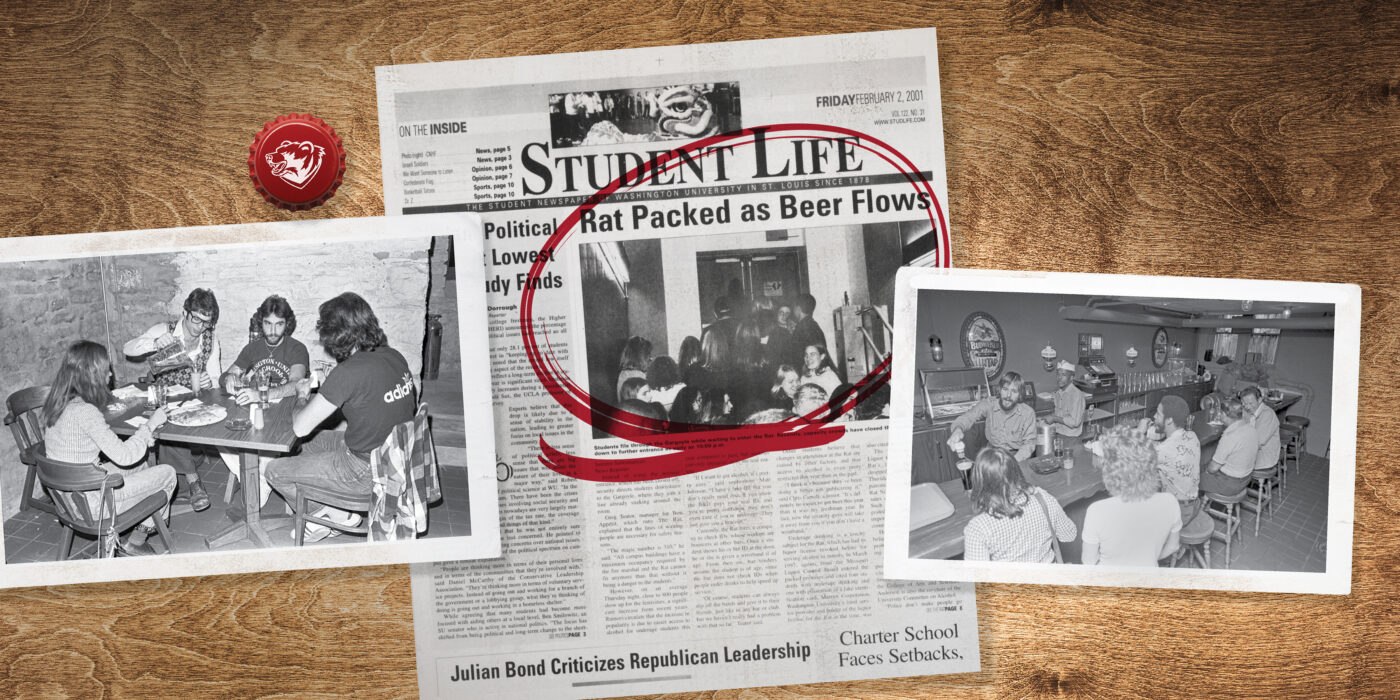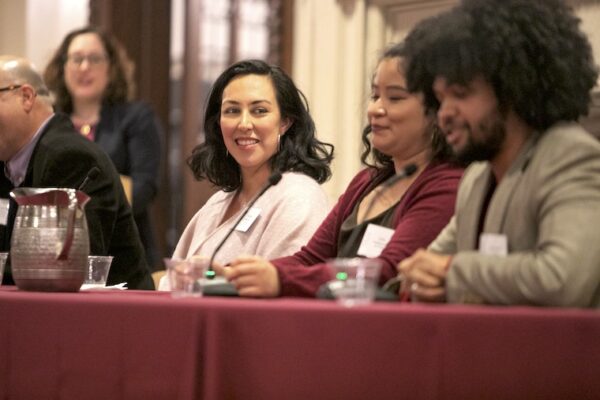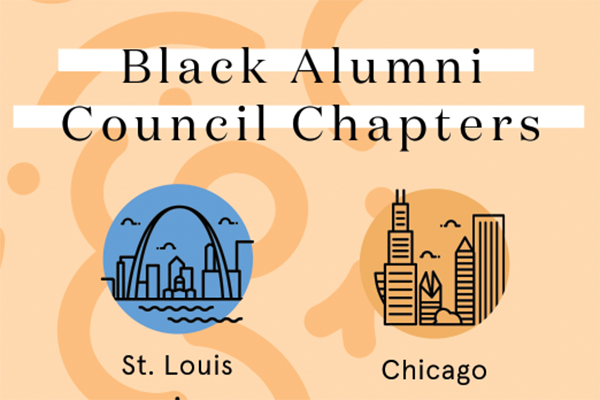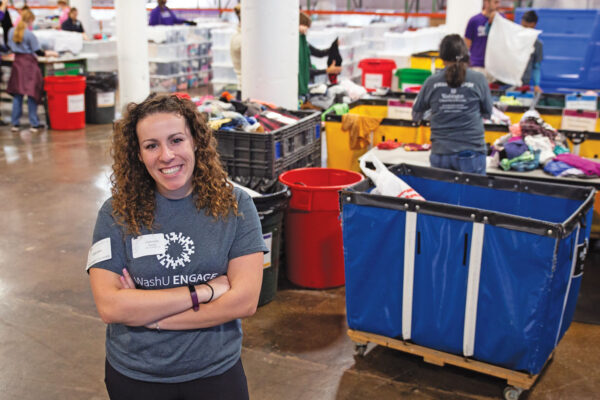The Rathskeller’s path to becoming a Washington University legend was paved with potholes. In 1974, the university shuttered Karl D. Umrath Cafeteria to make way for a new underground eatery modeled after a traditional German biergarten. Students were mostly irritated by the disruption, which left them with only two dining options on campus. The project faced multiple construction delays, including a local sheet metal workers strike, which Student Life documented with comic exasperation.
Despite its slow rollout, the Rathskeller, dubbed the “Umrathskeller” after a contest, turned out to be a smash hit. Affectionately nicknamed “the Rat,” it evolved into a campus fixture, slinging burgers, pizza, beer and more to WashU students — and even a few faculty. Cheap beer certainly helped buoy the Rat’s popularity. But ultimately, an ineffable alchemy of carbs, convenience and community kept students coming back for nearly 30 years. More than two decades since the Rat poured its final pint, the beloved spot remains a supporting player in the fondest, fuzziest memories of many WashU alumni.
Prime real estate
Nestled in the basement of Umrath Hall, the Rat was a quick stroll from Brookings Quadrangle, Olin Library and the Athletic Complex. Visitors entered through a main door at the bottom of a ramp or a semi-unauthorized entrance in one of the tunnels running beneath campus. Inside was a food counter, a bar and five adjoining rooms for seating. A stage with a projector anchored one of the largest rooms, while a grand antique wooden table accommodating bigger parties filled another.
“It was a comfortable, welcoming hangout right in the middle of campus. It wasn’t a fraternity or a dorm room. It was a neutral ground where everyone could be together and have fun.”
WashU Trustee Nick Somers, AB ’84
Walking into the Rat was a sensory experience for David Simpson, AB ’80, AB ’80. “Your eyes had to adjust to the darkness,” he says. “Then you immediately smelled the burgers and onions frying on the grill.” As an undergraduate, Simpson frequently popped into the Rat to grab a sandwich or a burger topped with molten Cheez Whiz.
“The Rat was convenient but also unique,” he says. Unlike WashU’s other two cafeterias, it felt like a real sit-down restaurant with made-to-order fare. Although some students came to eat, others merely settled in to relax and watch soap operas like General Hospital and Days of Our Lives. “You couldn’t even talk because people were so riveted by the drama,” he remembers.
Cheers to the weekend
The mood was mellow during the daytime, but the energy ratcheted up considerably in the evenings. Thursdays at the Rat, otherwise known as “Rat Night,” marked the unofficial start of the weekend for many undergraduates. In 1975, students could score a 12-ounce glass of Budweiser for just 40 cents and a pitcher for $1.85.
Entertainment was also a big draw, and Simpson recalls seeing bands like St. Louis stalwart Jake’s Leg play the Rat’s stage. Even without live music, the place was consistently abuzz with jukebox tunes, televised sports games and conversation. “People were neck and neck, body to body, yacking away,” he says. “It was a great way to kick off the weekend.”
History in the making
During its nearly three-decade run, the Rat became an unwitting backdrop to major events like the death of John Lennon, the fall of the Berlin Wall and 9/11. There were celebratory moments, too, as when the United States beat the Soviet Union in the “Miracle on Ice” hockey game at the 1980 Winter Olympics.
For WashU Trustee Nick Somers, AB ’84, and his wife, Barrie Somers, AB ’84, the Rat was the site of a more personal milestone: their first date. As sophomores, they were introduced by mutual friends at the Rat. The couple married six years later and have maintained strong ties to WashU since graduation, first as alumni and then as volunteers and proud parents of Payton Somers, AB ’13, and Caroline Somers, AB ’16.
Even today, the Rat’s allure remains simple to Nick Somers. “It was a comfortable, welcoming hangout right in the middle of campus,” he says. “It wasn’t a fraternity or a dorm room. It was a neutral ground where everyone could be together and have fun.”
Long live the Rat
The idea of a campus bar seemed revolutionary to Ian Withers, BS ’02, when he visited his older brother, Ted Withers, BSBA ’01, as a 17-year-old high schooler. “The Rat signaled to me that WashU respected its students and gave them the freedom to make smart decisions or learn from bad ones,” he says.
During its nearly three-decade run, the Rat became an unwitting backdrop to major events like the death of John Lennon, the fall of the Berlin Wall and 9/11.
By the time Ian Withers arrived at WashU in fall 1998, the Rat was in its twilight. The prior semester, the bar had lost its liquor license, and Rat Night attendance began to plummet. Although the Rat regained the right to serve alcohol months later, management was leery about restoring Thursday night programming. Withers says he and several fraternity brothers and buddies in the Campus Programming Council helped orchestrate the return of Rat Night.
The group arranged security and staffing. One of Withers’ friends assumed bartending duties on those nights, eventually passing the baton to him. The pay — just beer and tips — was paltry, but the memories were priceless. When not behind the bar, he remembers crowding into booths or hitting the dance floor. A quiet kid growing up, he says he came alive at WashU. “At the Rat, I connected with people that I would’ve been too shy to talk to before, and I realized I had a lot to add,” Withers says.
The Rat permanently ceased operations in early 2003. A Subway restaurant occupied the space for a time, and today, it is home to university administrative offices. A new crop of WashU students calls for its revival every few years, and university leaders have recently hinted at the possibility of opening a new watering hole on campus. So far, no concrete plans are in place. But who knows? Alumni and students can only hope the Rat has more lives than a cat.



